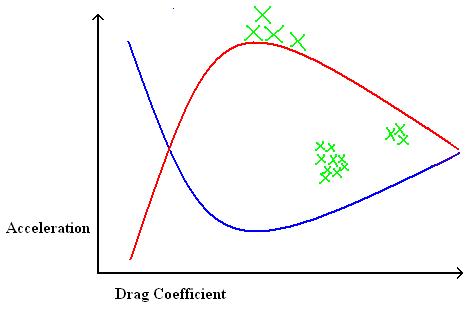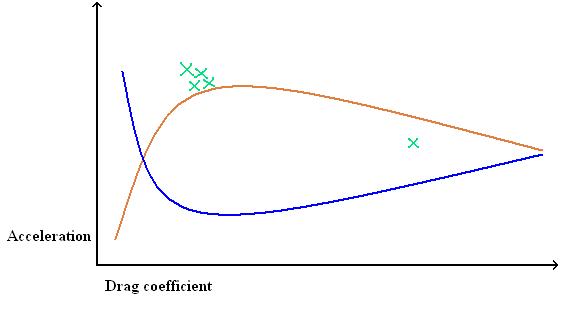
09.07.2003 - 2:19 p.m.
I know it's not friday, but I've had this for a while and had no-where to post it, until now....
as I was saying....
....in short, the dissipation factors experienced during random and sustained decceleration through a dense, aqueous medium can be described as the path 'A' of body 'B' in a downward trajectory 'C' culminating in the flattening of the acceleration curve 'X' to as near as zero as makes no difference. This formulae can also be applied when the body has an intense polarised field of orientated water molecules, this eases the path through the medium by reducing molecular drag at vortex points and at the head of the body, there is also some degree of polarisation of the surrounding matter especially in the wake but this can dissipate over a few seconds as the energy is released back into the environment. The practical application of polar dissipation allows faster progress through a dense but liquid medium and can be applied to hi-speed marine technology for military purposes and in the civilian sector, for endurance and trials competitions, the most underfunded aspect of competitive trials is supersonic fish racing.
It has been proved in earlier experiments that it is possible to move at supersonic speeds in a marine environment, this would cause intense disruption to the environment in the wake of the body, the need is to minimise the wake by creating a localised field around the body in transit.
A body in transit will have momentum 'D' which will be the square of the energy input multiplied by the drag coefficient 'E', therefore a body with no drag can transfer all the motive energy to the environment and thus move quickly. In a medium such as raspberry jelly where the drag on a speeding body will be higher, it will be necessary to reduce drag by creating an artificial field around the body. A polarised field will reduce molecular friction with the surrounding environment as described in the graph below. 
The effect of the bipolar field can be seen clearly as the acceleration inceases with a stable field in place the drag is reduced, the green crosses on the graph reflect localised areas where the dissipation factors are stronger than the cohesives forces holding the field together. Using this model we can predict how an average sized marine body, say a ten kilo atlantic salmon can be accelerated to 1274 m/s/s in a 13% saline environment, the dissipation effect would be less in fresh water but there are few areas of fresh water large enough to do running trials. Atlantic salmon of course do not have the necessary organs to generate a stable bipolar field ( that is, a field generated in both magnetic directions ) so we would need to incorporate a generator either into or onto the fish.
It would be easier to say that we can now propel a field stablised body through a liquid medium at very high speeds, but the real test is through a gelatinous water based medium with added flavournoid chemicals, to achieve this the field needs to be extended ahead of the moving body to cause an earlier partitioning of the medium as shown in the graph below, 
This model is obviously more capable of propelling through a denser medium, the power output should be calculated on an inverse square to the density of the medium measured as grams per centimetre cubed.
This has now opened the way for competitive salmon racing in jelly, which will generate huge gambling revenues, especially in far eastern coutries where they'll bet on anything that moves. The prospect of supersonic salmon though will have a dire effect on the fishing industry should salmon ever learn to reproduce this technology naturally.
previous - next
